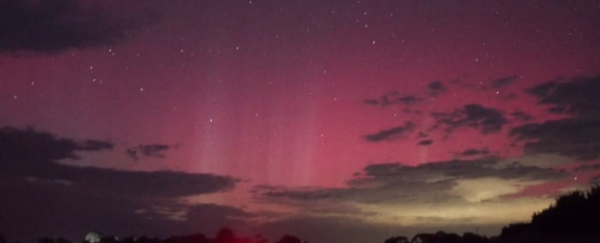
The video above was recorded in Goulburn, a regional city in the Australian state of New South Wales. Despite its name, the Aurora Australis - also known as as the southern lights, because it is the southern counterpart of the Aurora Borealis - is usually only seen in New Zealand and Hobart. But thanks to the incredible solar activity that's been going on over the past few days, it's been more vivid than ever.
Similarly, there have been reports of clear sightings of the Aurora Borealis, or northern lights, across the north of the US, including Washington State and Minnesota, and tonight, people from Alaska to Canada and much of Eurasia will also be able to see it, according to Andrew Freeman at Mashable. "It's possible that the Northern Lights will be visible as far south as Tennessee, New Mexico and Oklahoma on Tuesday night, NOAA experts said, depending on the evolution of the event's intensity," he adds.
But pretty lights isn't the only thing this solar storm will bring. Classified as a 'G4' level storm (which means 'severe'), it's one step down from the highest category of solar storm, and it's possible that the activity could mess with our communications systems, such as radio transmissions and GPS signals, and also the electricity grid. However, so far, there have been no reports of any problems, according to the NOAA's Space Weather Prediction Centre.
The storm is caused by two massive coronal mass ejections (CMEs) that were expelled from the Sun on March 15, and started to interact with the geomagnetic field and atmosphere that surround Earth. "In a press briefing on Tuesday, NOAA scientists said the two CMEs may have unexpectedly combined as they sped toward Earth, which could explain why the geomagnetic storm has been so strong," says Freeman.
So for now, let's just sit back and watch the pretty side effects of the Sun's colossal storm, and hope that's all it'll bring. You can see a bunch of images taken from locals on the Australian mainland here.
Source: Mashable
